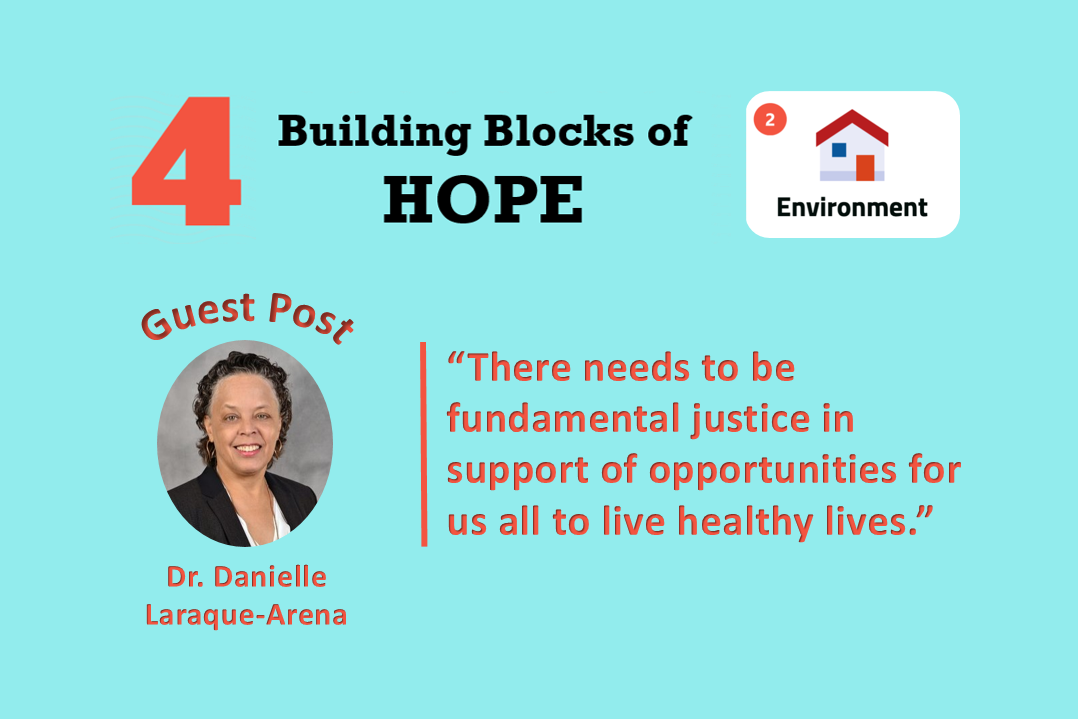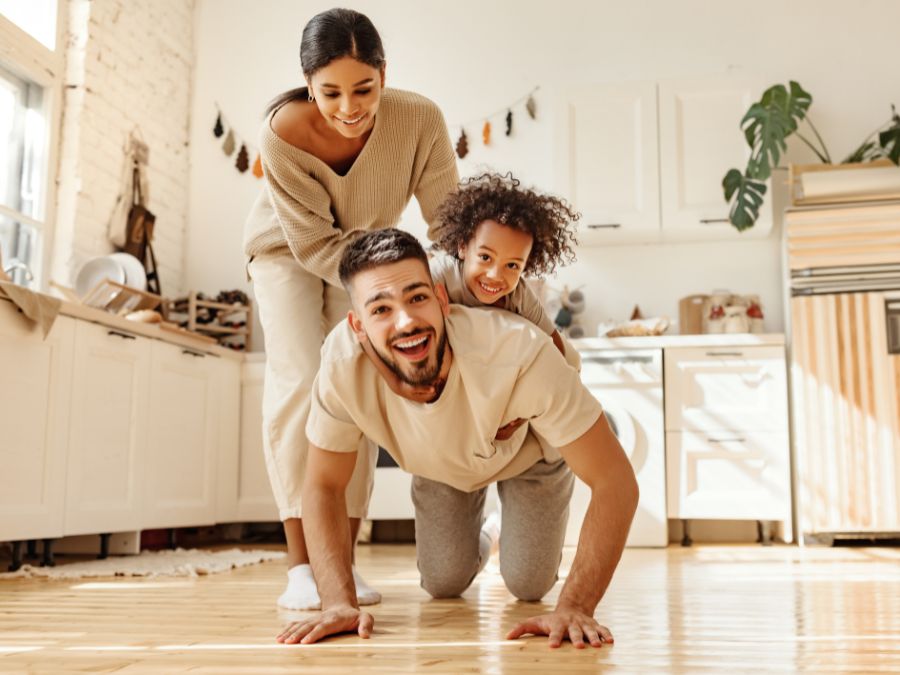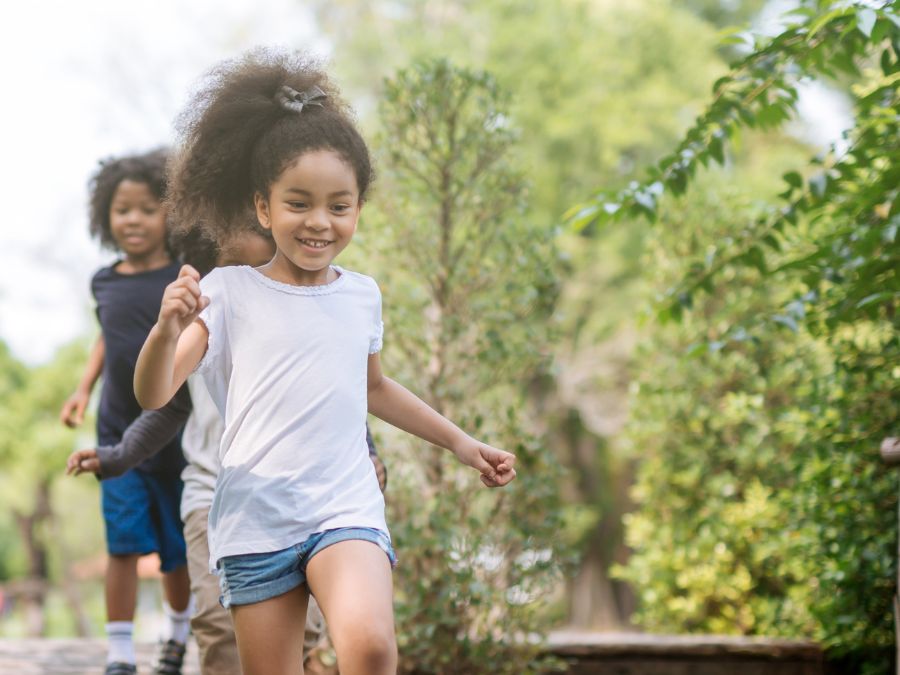
Having safe, stable, and equitable environments to live, learn and play forms the second of the 4 Building Blocks of HOPE. Children need homes where they feel safe and secure and have their basic needs met. Children thrive in an environment that encourages curiosity and provides opportunities for learning to play and interact with other children. Today’s blog is based on an interview with HOPE National Advisory Board member Dr. Danielle Laraque-Arena about how the pandemic affects children’s environments, and offers some much-needed guidance and resources. Throughout the post, click on the question headings for recorded video snippets of the original interview.
Dr. Danielle Laraque-Arena is a senior scholar-in-residence at the New York Academy of Medicine. She is a pediatrician, professor and president emerita at SUNY Upstate Medical University, and an adjunct professor of epidemiology at Columbia University.
Her perspective comes as a member of the healthcare profession, as a mother, and as a grandmother.
How does Covid-19 highlight existing inequities?
Thank you for inviting me to speak of Love in the Time of Covid-19. I want to start with a positive message. Bob Sege, in putting together the HOPE Initiative – Health Outcomes from Positive Experiences – is framing what many of us have done in our careers and communities –looking at the positive experiences that support children. I believe that this strength-based approach is needed at all times, but especially at times of crisis. The positive message for us today is: we are one world and our collective actions will demonstrate to children and teens that they are not alone and that there is hope. Issues of the 21st century have underscored the necessity for this perspective with climate change, global markets, globalization, and infections with global impact becoming the urgent problems of the day.
While the Covid-19 pandemic seems to have disproportionately affected those who are vulnerable (e.g. older adults, those with chronic conditions or immune deficiency), it has also shown us that anyone can be affected. We have a civic and social responsibility to care for each other. That’s a lesson I hope we retain as we go through this, because people’s best efforts come out during crises, but we do have short term memories. We forget that these principles are true all the time, not just during crises. Let’s not forget the love at the end of this. And it is particularly important for children. But yes, the Covid-19 pandemic does uncover basic inequities in our health care system and broader societal opportunities. Let me name a few.
Inequities exacerbated by Covid-19
Access to Care: Good health and wellbeing, one of the Sustainable Development Goals (SDG), is achieved in part through universal health coverage. The elimination of health inequities is facilitated by universal access to basic and specialty health services. And, the SDGs have also called our attention to the many social and political determinants of health, such as poverty.
A majority of the US healthcare system has tied health insurance to employment. At the time of this interview, we have over three million [Americans] who have claimed unemployment benefits in the advent of this pandemic, putting into jeopardy their access to health care. How does that affect our ability to provide them health-related services? Do they have disposable cash to take on additional burdens? Do we have a healthcare system that attends to all? We’re not all the same. But there needs to be fundamental justice in support of opportunities for us all to live healthy lives.
Poverty: In New York, the governor has said that no landlord can oust someone from their home during this pandemic. This is a positive measure but calls attention to the housing risks faced by many families who survive paycheck to paycheck. Many of our schoolchildren qualify for free breakfast and lunch – so food insecurity becomes even more apparent during the full-scale closure of schools. We’re dealing with poverty, economic injustices, lack of jobs, and of course, educational inequities based on zip codes. Current gaps in educational achievement may be exacerbated by this pandemic – e.g. due to lack of access to digital platforms, the stresses on already stressed educational systems, and the stresses placed on families at this moment of crisis.
Climate Considerations: We know that poorer communities are disproportionately affected by climate change and environmental degradation. There have been decreases in pollution being reported in Europe as a result of Covid-19. Isn’t that amazing? And cleaner water in Venice, Italy. Can we retain some of the corollary benefits of a slower society, as evidenced by the conditions calling upon us to use our technological capabilities in different ways, to benefit work conditions and the environment? We may not want to return to business as usual when the pandemic is over. Surely a cleaner world will benefit our children.
(Dr. Laraque-Arena has practiced in New York during both 9/11 and the Haitian earthquake disaster) How have your experiences informed your pediatric views now?
During 9/11, people asked, “How do you talk to children about disasters?” Well, maybe the first thing is, you observe and listen! Understand where kids are developmentally—age is not the only barometer. Listen first. Answer simply and truthfully. Don’t assume they don’t understand things, either at an emotional or intellectual level. The 6- month old whose routine has been changed, may be a little fussier. That’s their way of responding to change.
We know the effects of Covid-19 are going to be on social/emotional health. Our entire lives have changed. But, we have a lot of tools, a lot of preparation around responding to crises. For example, New York State integrated the concept that mental health is health in the Medicaid redesign following 9/11. Many of us worked as part of the Medicaid redesign team to have trauma as a designated qualifying criterion for access to Medicaid-enhanced services for health home. And our response to the present pandemic is informed by our experience during the events of 9/11, with a focus on self-care and caring for each other, especially the most vulnerable among us such as children.
How can institutions and organizations help families and create positive experiences for children?
Our institutions and organizations can be pro-child by being visible in our support for children. Let us not debate if children have access to good food – or if we use public policies to lift families out of poverty (e.g. SNAP). In the Fall of 2019, UNICEF USA completed an online survey of kids, and they noted that kids don’t feel their opinions are asked. If we look at the national agenda, are children actually mentioned? How do we cooperate at the national, federal, and state level to address child health equity? Do we say to children, “This is a tough time, but you know what? All the hospitals are working together, and the president and the people we elect are talking to each other – the governors, the mayors – and we’re all saying the same thing! We’re going to figure it out, whatever it takes.” We’ve had trouble doing that, and kids are great observers of our behaviors as adults. They see whether we truly mean that we love them and that we support them. We must show that we are cooperating, we are working as one.
I want to mention something that a mother taught me years ago. She had lost her husband on 9/11, and then worked as a faculty member of the tri-state Reaching Children Initiative during our mental health response to 9/11. She shared her perspective on the overused word, “resilience.” Oftentimes we say, “Oh, kids are resilient. They’ll get over this.” She explained that this is not the meaning of resilience. Resilience doesn’t mean you don’t need support. We must understand the traumas we go through, and then ask, how do we support each other?
We learned during and after 9/11 to pay attention to all the needs of children and teens – for example, to screen for how children are doing from a social-emotional perspective in schools and primary care settings, and equipping those who have the most contact with children (e.g. pediatricians and teachers) with the tools to effectively support their mental health needs. We began the long journey of de-stigmatizing mental health conditions – and knowing that in addition to teaching the important lessons of prevention (e.g. social distancing in the case of Covid-19), infection control (e.g. hand washing), and harnessing our health system to work in a coordinated fashion, we must attend to our children’s emotional needs by being prepared as health care professionals, on the frontlines and beyond, to prevent, screen, diagnose, treat, and follow-up on mental health concerns. The use of art and music for self-expression by children was used in 9/11 – and now we are seeing the use of apps to promote physical activity (see the UNICEF USA video platform) and digital platforms to connect groups of children and teens who have lost the social connection provided by schools and day care centers.
Any last parting insights?
The current pandemic is an opportunity for us to reflect inward. To reach out to each other. Some have more time on their hands, or at least, have had to drastically change their routine, working remotely – and others are risking their lives on the frontlines. Let’s use this opportunity to talk to each other, to listen to each other, and I’m fully optimistic that we will get through this pandemic, and that our children will help lead the way. This was demonstrated to me by the care my 2 ½ year old granddaughter showed me when she saw me wearing a mask and asked if I was sick. (I had worn a mask in an abundance of caution when I had some sniffles.) A week later, when she saw me again, not wearing a mask, she had not forgotten. She said, “Grandma, you’re better now?” Her worry and caring for me was visible and heartfelt. Let us make sure that at all times, we show this same attention and love for all our children.
This interview was conducted, transcribed, and compiled by Chloe Yang. Videos were cut and produced by Chloe Yang.


